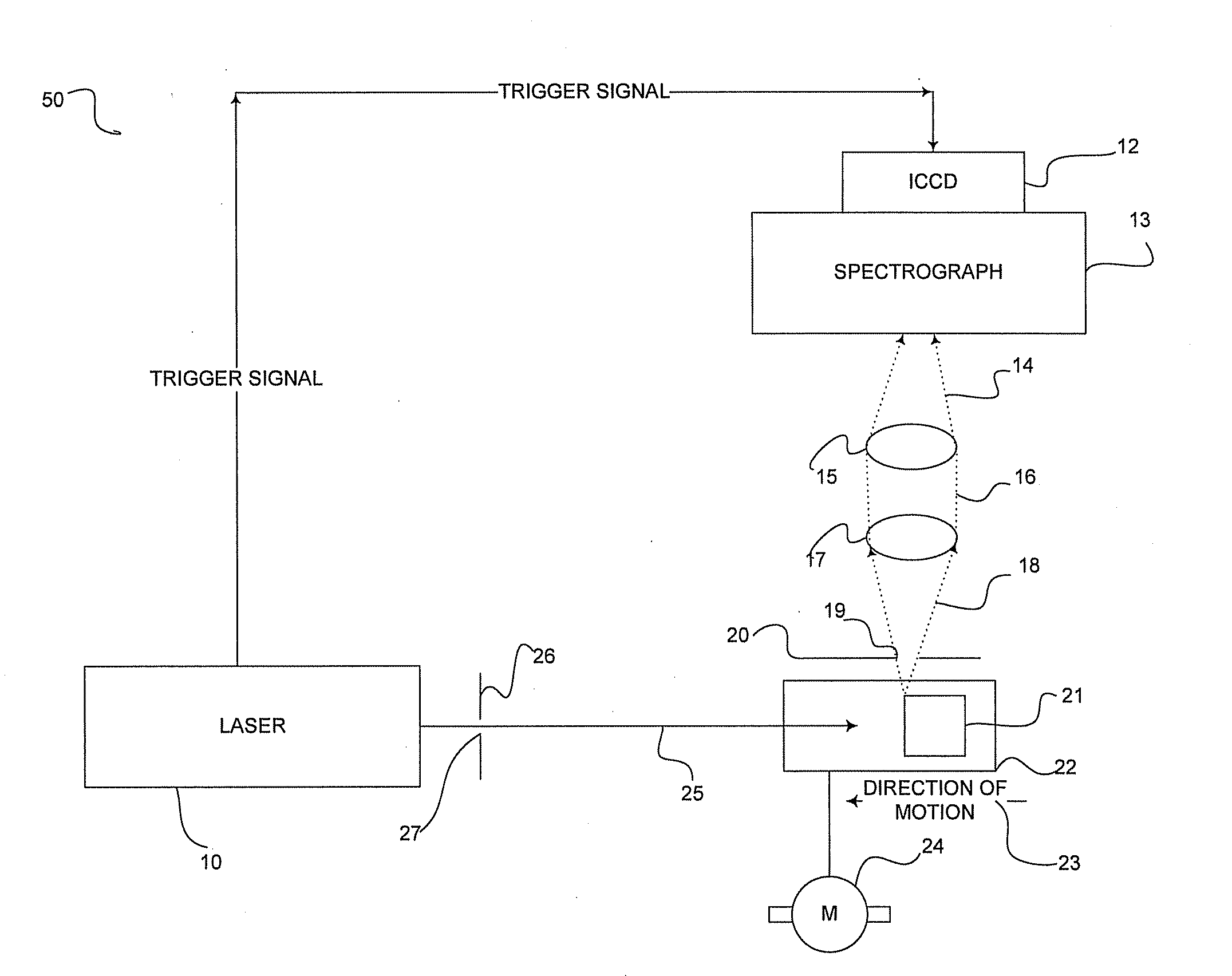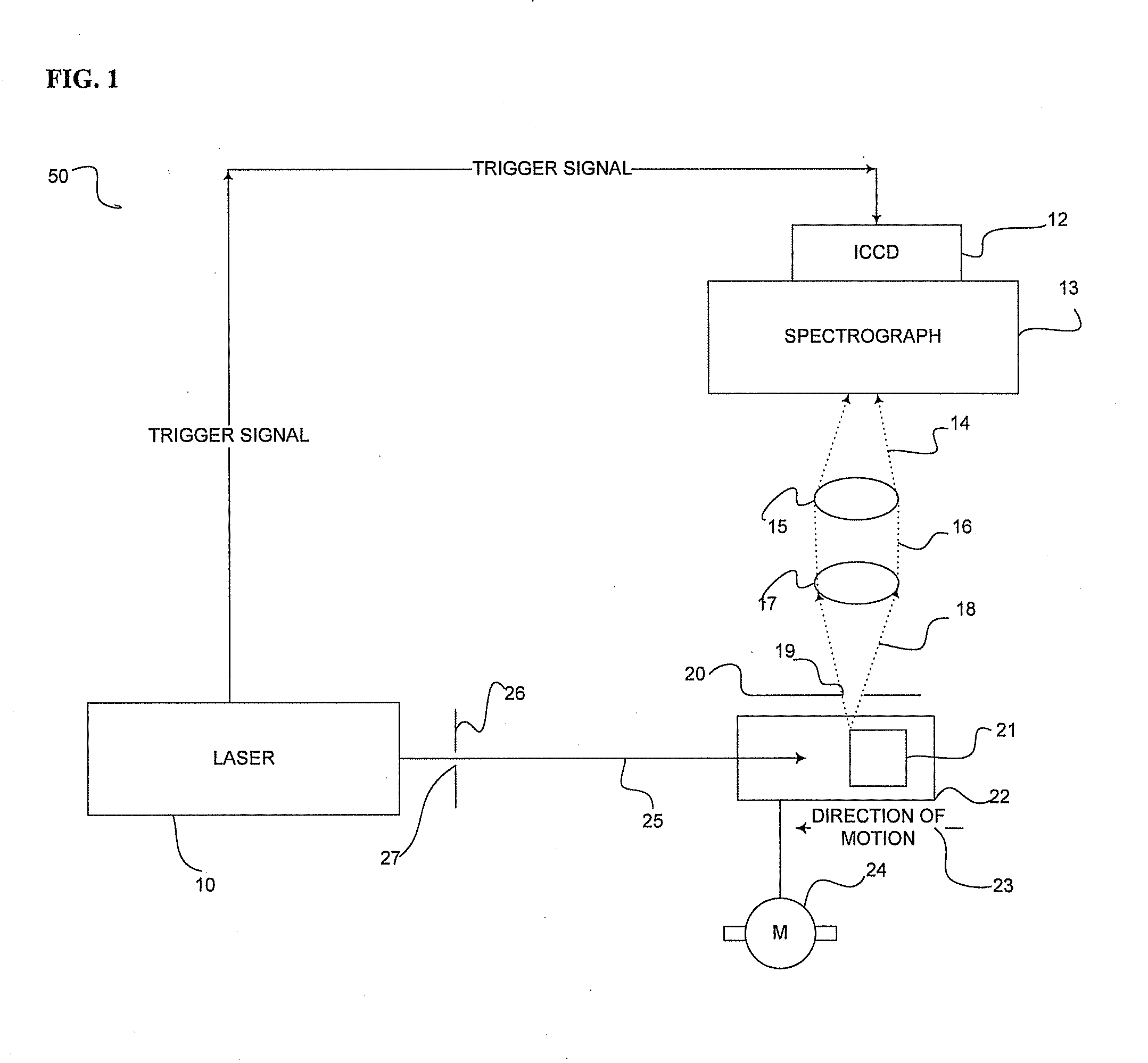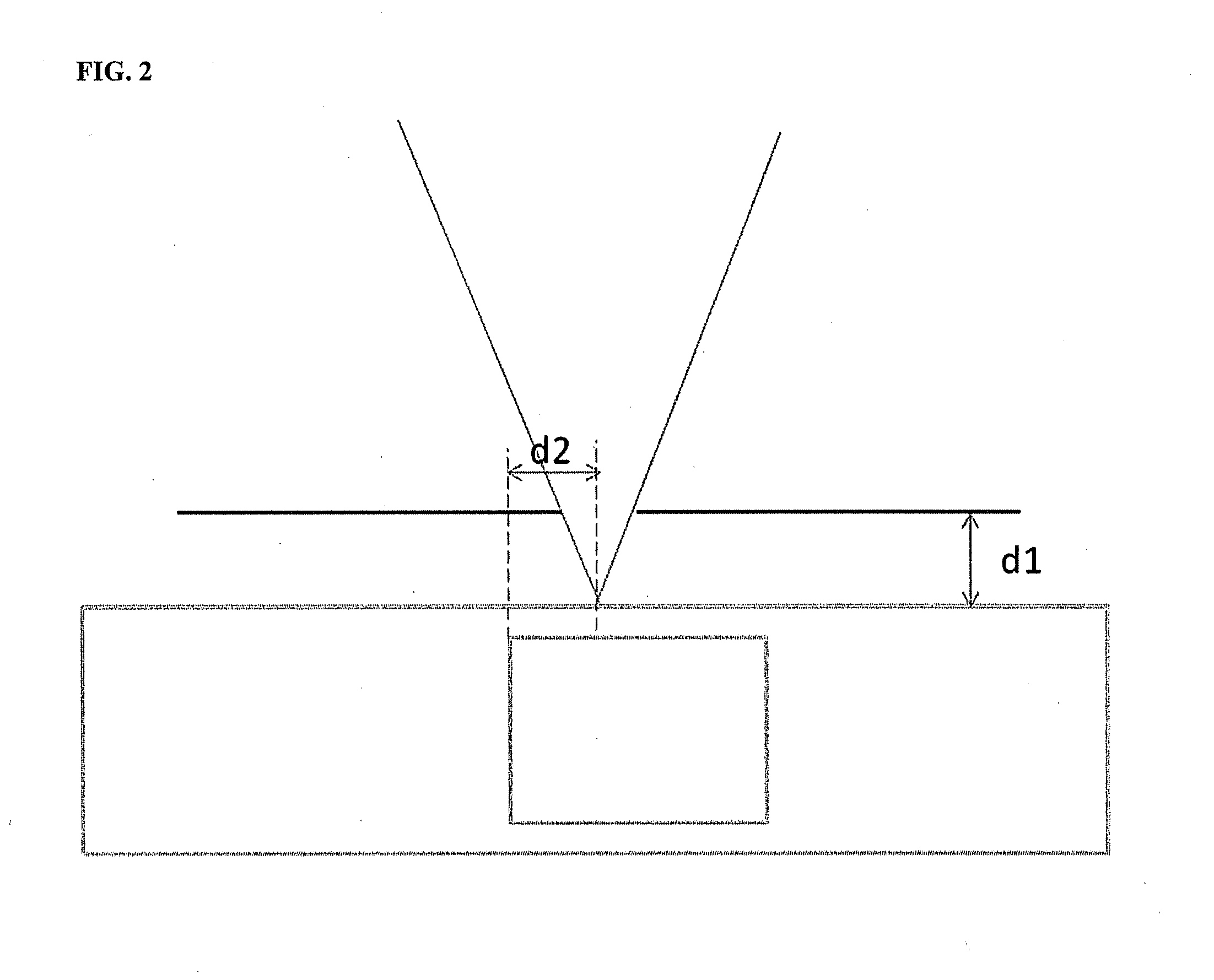Method for Detecting Drag Reducer Additives in Gasoline
a drag reducer additive and additive detection technology, applied in the field of methods, can solve the problems of long-chained drag reducer additives being subjected to gradual breakage, affecting the detection accuracy of drag reducer additives,
- Summary
- Abstract
- Description
- Claims
- Application Information
AI Technical Summary
Benefits of technology
Problems solved by technology
Method used
Image
Examples
examples
[0042]Examples of the laser-induced fluorescence spectra are shown in FIG. 3, which are for commercial drag reducer additives-free gasoline having octane grade 91 with dark green coloring additive dye and other standard additives. Both spectra in FIG. 3 were measured within time-gates of 3 ns each. The top spectrum is 0S3 and the bottom spectrum is 6S3. The two distinct peaks on each spectrum are at approximately 383 nm and 430 nm. The first part of the method maintains that, on the 0S3 spectrum, a gasoline sample is contaminated with drag reducer additives of any amount >0.1 PPM if the peak at 383 nm drops in intensity relative to the peak at 430 nm when compared to a non contaminated gasoline sample.
[0043]Preparation of Known Drag Reducer Additives Concentrations in Gasoline Samples
[0044]In the following examples the gasoline samples were supplied by the Dhahran refinery of Saudi Aramco Oil Company and had included the standard dark green dye and all other standard additives such ...
PUM
 Login to View More
Login to View More Abstract
Description
Claims
Application Information
 Login to View More
Login to View More - R&D
- Intellectual Property
- Life Sciences
- Materials
- Tech Scout
- Unparalleled Data Quality
- Higher Quality Content
- 60% Fewer Hallucinations
Browse by: Latest US Patents, China's latest patents, Technical Efficacy Thesaurus, Application Domain, Technology Topic, Popular Technical Reports.
© 2025 PatSnap. All rights reserved.Legal|Privacy policy|Modern Slavery Act Transparency Statement|Sitemap|About US| Contact US: help@patsnap.com



